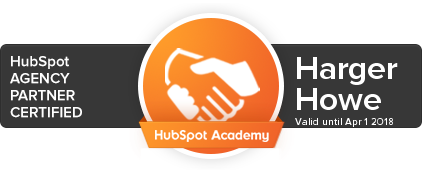Recruiters are some of the busiest people in the world, so it goes without saying that they don’t want to waste a minute of their day. One main ingredient in the sourcing candidate recipe is effective LinkedIn recruiting strategies since the platform is both useful for filling positions and qualifying candidates. Above all, it’s incredibly important to know what you’re looking for in a candidate. Here are some baseline things to look for on a potential applicants profile that will help you pluck the diamonds from the undeveloped coal.
1. Star Quality
If you use LinkedIn, you know that you can be rated an all-star based on the elements you complete in your LinkedIn profile. It’s quite simple to fill in those options as they are just:
- Profile Picture
- Experience
- Skills
- Summary
- Industry
- Location
- Education
- Connections
This all-star status shows you that these applicants are committed to putting their best foot forward and it may be an indication that while they might have a job, they might be interested in a better offer. A complete profile is usually indicative of an ideal passive candidate.
2. Positive Recommendations
There is nothing better than having direct information about a candidate at your fingertips and luckily, LinkedIn allows you to see just that! Though you might ask for more information or references in the future, recommendations on LinkedIn allow you to pre-screen applicants without bringing them in for a formal interview.
3. Overall Community Engagement
Seeking candidates that are well connected and get along with others is key to business success. Per Recruiter.com, “50 connections is novice; 50-100 connections is a good starting point; 300-400 connections conveys engagement; more than 500 connections conveys a savvy, connected candidate.” While the number of contacts isn’t always a perfect indicator of a good candidate (they might be new to the site or especially selective in their connections), it is a good way to take a peek at how they rate in their talent community.
Another way to measure a candidate’s engagement is through their use of shares, likes, comments and posts. If a candidate is using LinkedIn regularly to keep up with trends and to share relevant information, you know that they are interested in being an integral part of their industry.
4. A Professional Summary
A professional summary is a great way to see how a candidate views themself. They typically utilize words that are action-oriented and give direct details about their skill sets. These summaries are in essence an elevator pitch as to why you should hire them. Bad pitch? Pitching for a different job entirely? Maybe they’re not the right person for the job.
5. Moving on Up!
Is the person you are looking for moving in a decided direction? This doesn’t always mean that they are in the same industry, but there definitely needs to be a common thread. Look for skills or responsibilities that are consistent from place to place. What you’re ultimately looking for is a candidate progression that makes sense made up of skills/abilities, accomplishments and tenure.
6. Consistency
When you receive an application from the candidate that said their previous position was Healthcare Administrator, you would probably be alarmed to see that their LinkedIn profile read Independent HR Professional, right? While both of these careers are valid, a candidate’s profile should match their resume. There are always exceptions to rules, but typically, if the candidate is looking in a serious manner, all of their resources will be in tiptop shape.
7. Keywords and Industry Searches
One great way to find ideal candidates is to search via industry or by keyword. If a candidate’s profile is updated and is in line with the job you are looking to fill, the site will be able to pull information from the summaries, experience sections and headlines. Presto! Candidates galore!
LinkedIn is great because it allows you to preview a candidate and see how they might fit into your company. A well-kept profile will answer the ultimate recruiter questions like “why should I hire you?” or “what makes you different?” and once those are out of the way, it’s easy to decide whether to bring them in for a face-to-face interview.
*Pro tip! Keep in mind that LinkedIn profiles should be maintained on a recruiter’s side too!
--
Want to learn more?











